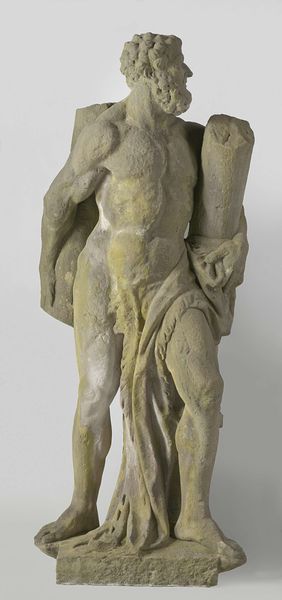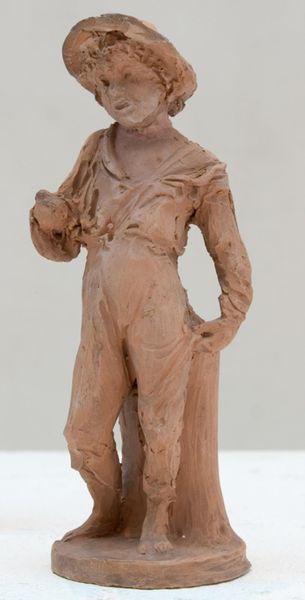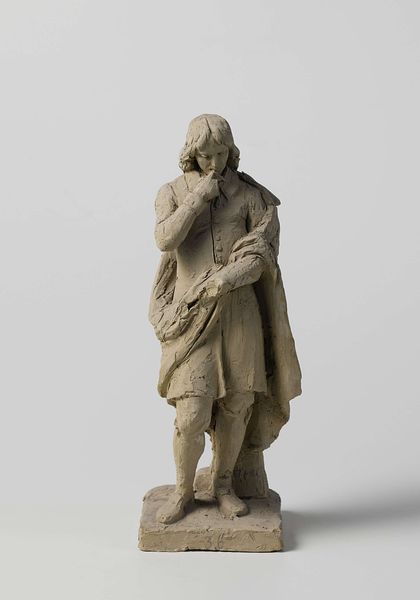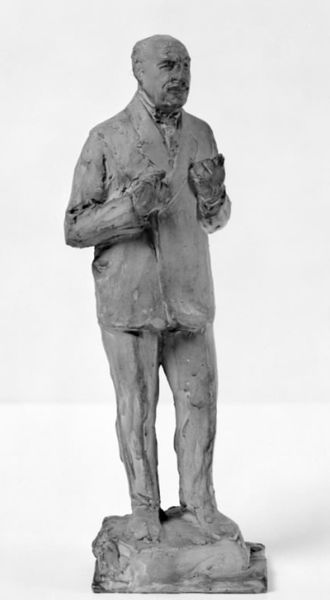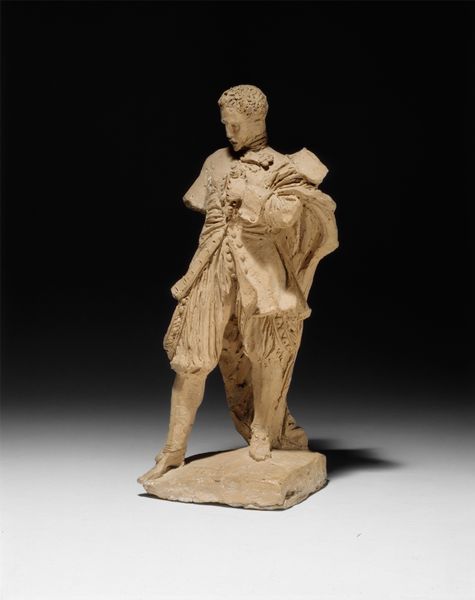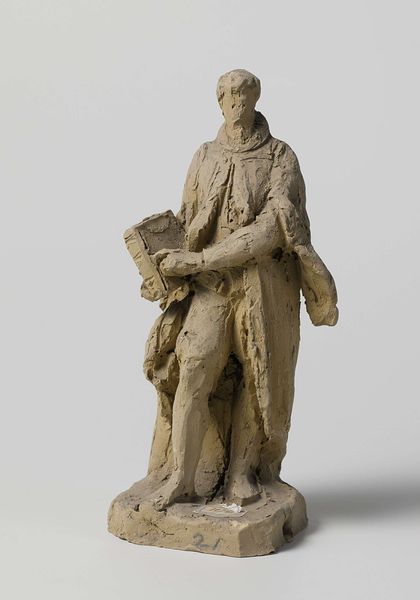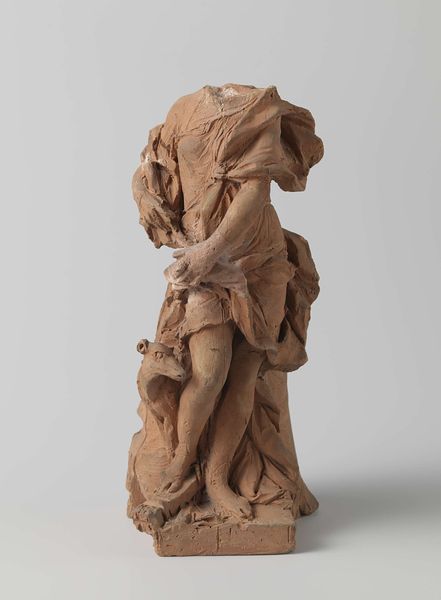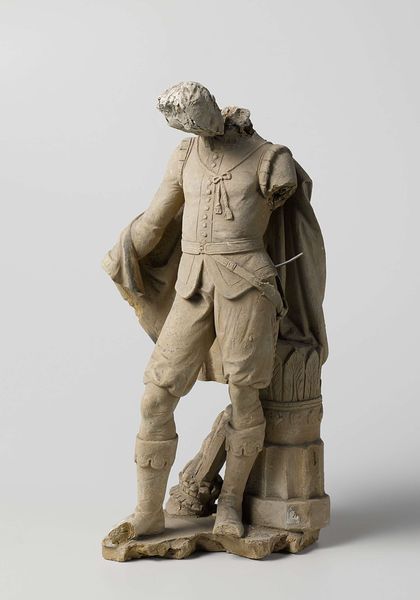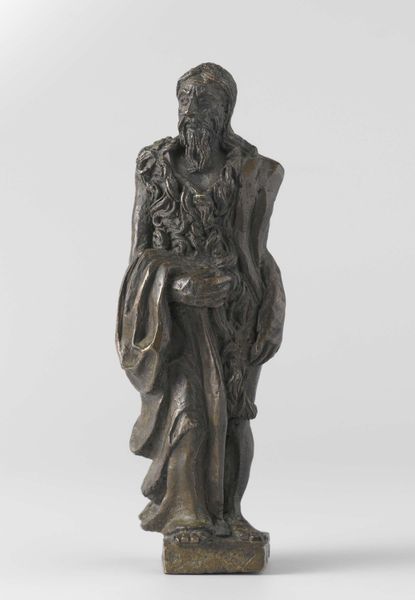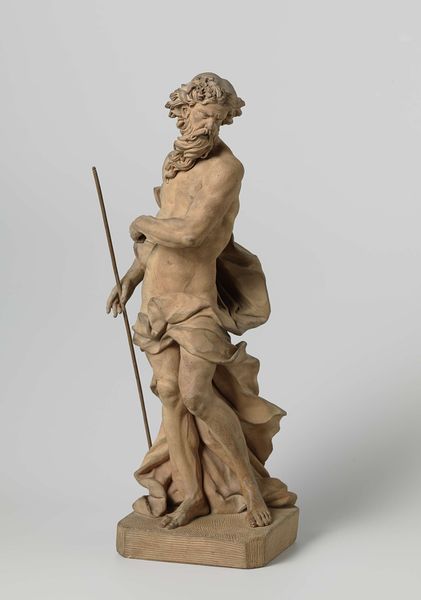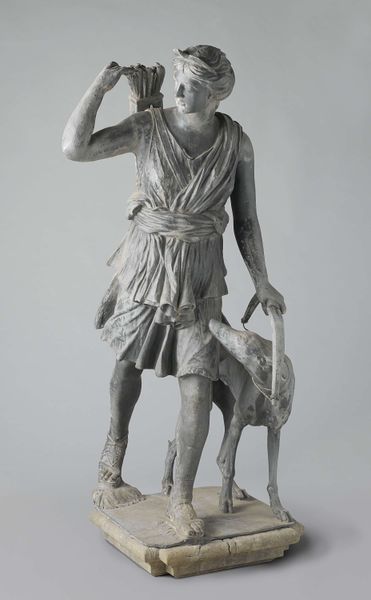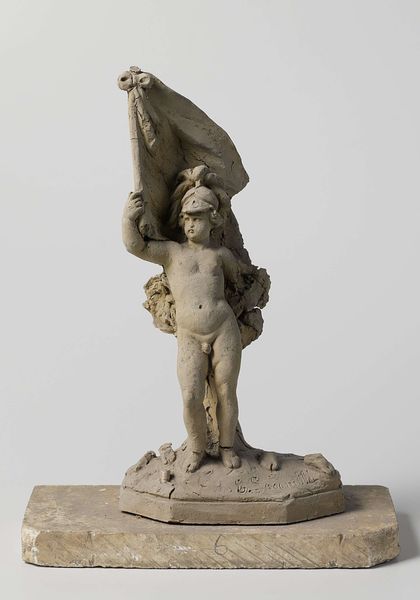
sculpture, marble
#
portrait
#
baroque
#
sculpture
#
greek-and-roman-art
#
sculptural image
#
figuration
#
male figure
#
sculpture
#
marble
Dimensions: height 171 cm, width 61 cm, depth 45 cm, weight 280 kg, height 12 cm, width 190 cm, depth 77.5 cm, weight 21 kg, weight 301 kg
Copyright: Rijks Museum: Open Domain
Curator: Let’s discuss this intriguing sculpture, “Mercury,” dating from about 1710 to 1725, crafted from marble. Editor: It strikes me as remarkably poised, considering the wear and tear. There’s a subdued tension in the figure's contrapposto pose and the slight turn of his head. It exudes classical restraint. Curator: Indeed. We see in this piece a continuation of the Baroque interest in classical subjects, though filtered through the lens of 18th-century aristocratic taste and patronage. The choice to depict Mercury, messenger of the gods and a symbol of commerce, might tell us something about the social ambitions of the work's commissioners. Editor: Look at the surface quality; the rough texture catches the light in such a way that it softens the idealized form. It avoids a harsh, clinical perfection in favor of a warmer, almost melancholic presentation. The formal execution feels very different from what was popular at the time. Curator: What I find most interesting is not necessarily the formal characteristics, though they're notable, but the choices surrounding its display over time. The fragments lying adjacent to the sculpture...do we reattach them? Does the sculpture embody something in its fragmentary state? Editor: Good question. Leaving it incomplete amplifies its fragility. This also reinforces the contrast between the idealized subject and the harsh reality of the surviving artifact, almost speaking to ideas of fragmented identity and history. Curator: Precisely. Even now, Mercury acts as a conduit between vastly different cultural periods and their associated ideologies. It shows how art continually absorbs the evolving values that various groups and organizations impose upon it. Editor: I leave this analysis considering both its historical weight and its continued engagement with aesthetics. It encourages a multilayered viewing experience, making us think about surface, representation, and its unique moment in the passage of time.
Comments
No comments
Be the first to comment and join the conversation on the ultimate creative platform.
